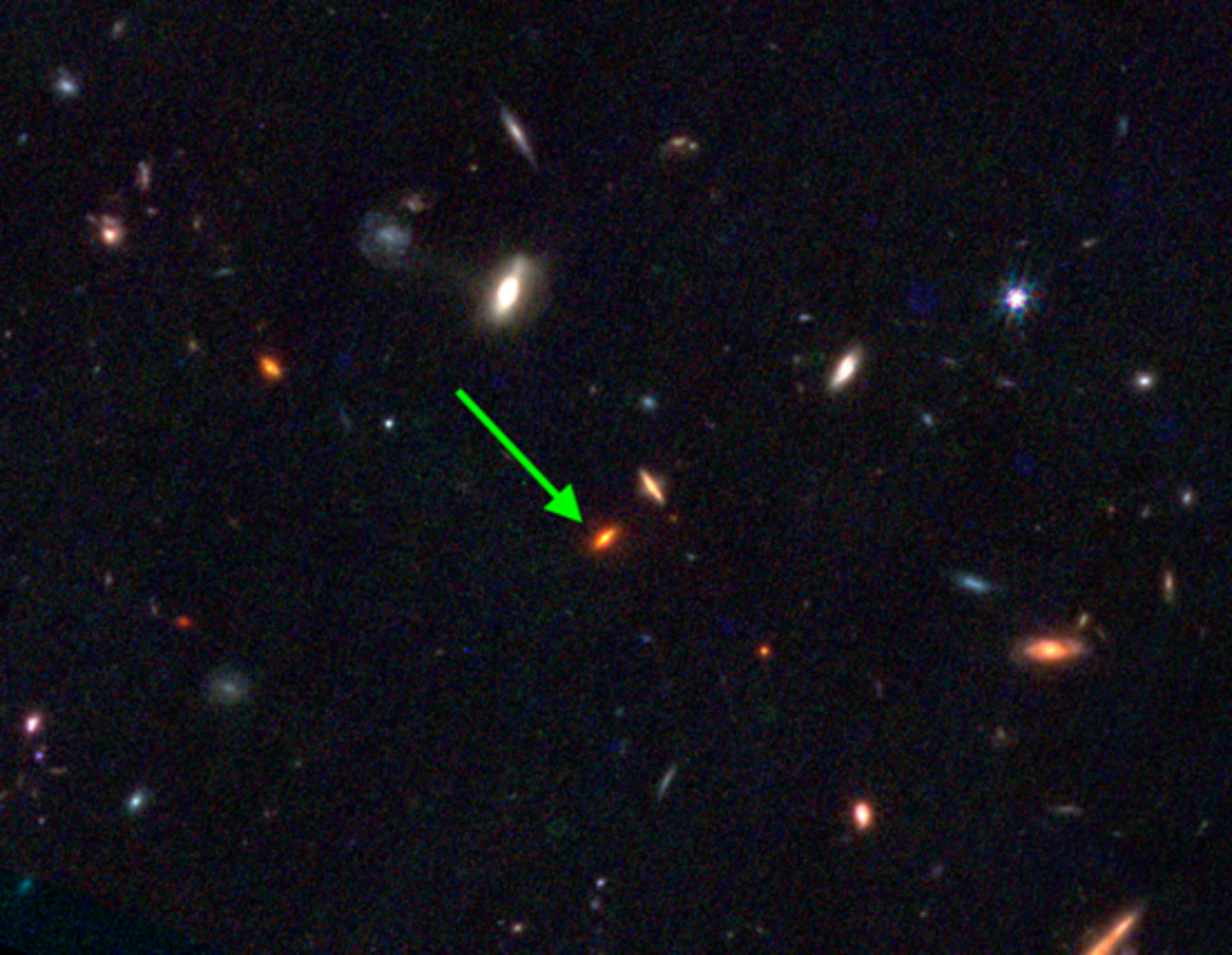
James Webb discovers galaxy larger than Milky Way: It cange our understanding of galaxy formation
The James Webb Space Telescope (JWST) has discovered a galaxy in the early universe that challenges the conventional understanding of cosmology, as reported by the study authors, Space.com reports.
This galaxy, named ZF-UDS-7329, surpasses the Milky Way in the number of stars, despite its formation occurring a mere 800 million years into the universe's 13.8 billion-year existence. Surprisingly, these stars appear to have originated without the influence of dark matter in their formation, contradicting the expectations of the standard model of galaxy formation.
The mechanism behind this occurrence remains unclear. Similar to previous findings by the JWST of unusually massive galaxies in the early universe, this discovery jeopardizes our comprehension of how the initial matter in the universe developed, and potentially challenges the foundations of the standard model of cosmology. The research results were published on February 14 in the journal Nature.
"Having these extremely massive galaxies so early in the universe is presenting significant challenges to our standard model of cosmology," remarked study co-author Claudia Lagos, an associate professor of astronomy at the International Centre for Radio Astronomy Research. This is because the extensive structures of dark matter, believed to be crucial for holding early galaxies together, did not have sufficient time to form during this early period of the universe, Lagos added.
The speed of light remains constant as it travels through the vacuum of space, enabling astronomers to peer deeper into the universe and observe light from increasingly distant and ancient sources. This principle allowed researchers to utilize the JWST to detect ZF-UDS-7329 approximately 11.5 billion years in the past.
Through the analysis of the light spectra emitted by the stars in this extremely remote galaxy, the researchers determined that the stars were born 1.5 billion years before the observation, or roughly 13 billion years ago.

Astronomers lack certainty about the initiation of the first clusters of stars forming into the galaxies observed today. However, cosmologists had previously estimated that this process commenced gradually within the initial few hundred million years after the Big Bang.
Current hypotheses propose that halos of dark matter, an enigmatic and imperceptible substance believed to constitute 25% of the present universe, amalgamated with gas to create the initial precursors of galaxies. Following 1 to 2 billion years of the universe's existence, the early protogalaxies progressed into adolescence, transforming into dwarf galaxies that engaged in mutual consumption to evolve into structures resembling our own.
Nevertheless, a recent discovery has disrupted this perspective: not only did the galaxy solidify without a sufficient accumulation of dark matter to initiate it, but shortly after a sudden surge in star formation, the galaxy entered a dormant phase — indicating a cessation of its star formation.
"This challenges the limits of our current comprehension regarding how galaxies form and evolve," stated study co-author Themiya Nanayakkara, an astronomer at the Swinburne University of Technology in Australia. "The pivotal question now is how they achieve such rapid formation in the early universe, and what mysterious mechanisms lead to an abrupt halt in star formation when the rest of the universe is still active."
The researchers' subsequent endeavors involve the exploration for additional galaxies exhibiting similar characteristics. If identified, these findings could substantially contradict previous notions regarding the formation of galaxies, as conveyed by the researchers.
- Related News
- Perseverance finds rock on Mars with signs of life on Earth (photo)
- On 25th anniversary of Chandra telescope, NASA released 25 photos previously unseen by the public
- Rare intermediate-mass black hole has been discovered at the center of our galaxy
- Stone "snowman" and pure sulfur crystals on Mars։ Remarkable discoveries by Perseverance and Curiosity
- When will humanity settle on Mars? Interview with Gernot Grömer
- TESS telescope discovers super-hot exoplanet the size of Neptune
- Most read
month
week
day
- Buyers massively complain about Samsung's Galaxy Buds 3 and Buds 3 Pro headphone, even finding hair in the box 820
- With today's mortgage interest rates, banks simply cannot sell products in 2025: Interview with Vardan Marutyan 811
- Ants and bees 'taught' tiny drones to navigate without GPS, beacons or lidars 675
- Samsung will release Galaxy Tab S10+ and Ultra tablets and Galaxy Z Fold 6 Slim and Galaxy w25 smartphones in October 640
- Mass production of iPhone SE 4 will begin this October, with sales starting in 2025 599
- Insider unveils specs of all smartphones of iPhone 17 series, including the 17 Slim 595
- Telegram's monthly active audience reaches 950 million 585
- What dangers can feature phones from unknown manufacturers conceal? 553
- For the first time in history, iPhone will get a Samsung camera 552
- Next iPhone SE may have powerful A18 chip and Apple Intelligence AI functions 546
- Archive
